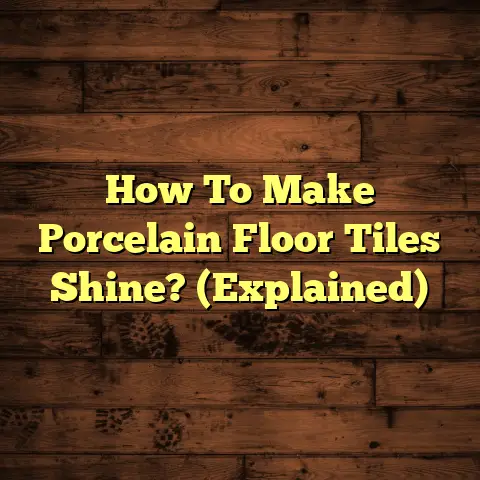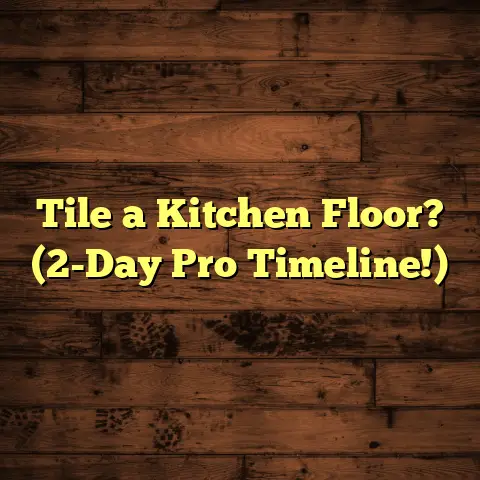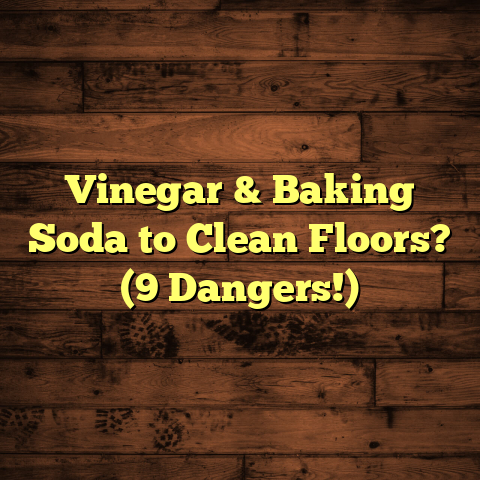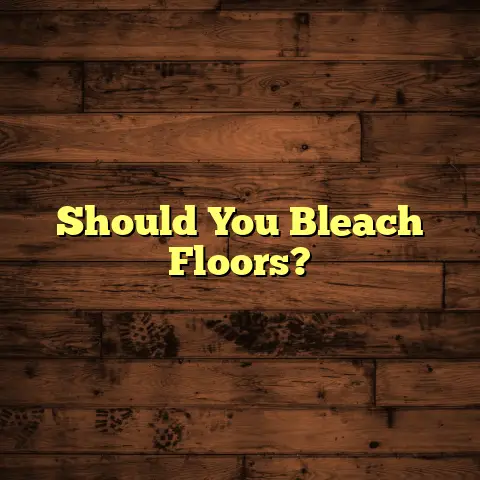Baby On Floor Mat? When Is Safe? (1 Toxic Risk!)
How do you envision your baby’s early developmental stages? I know, it’s a whirlwind of excitement and a whole lot of question marks, right?
Whether you’re juggling a career, rocking the stay-at-home life, or embracing a minimalist approach, we all want the best for our little ones.
And that often includes creating a safe and stimulating space for them to explore.
That’s where floor mats come in!
As a flooring contractor, I’ve seen firsthand how popular these mats are. They’re not just a soft spot for tummy time, but a launchpad for early development.
But are they always safe?
Let’s dive in and uncover the truth about floor mats and your baby’s well-being.
Section 1: The Importance of Play Mats
for Babies
Play mats are more than just comfy surfaces. They’re actually vital tools in your child’s developmental journey.
Think about it: babies spend a lot of time on the floor. Play mats provide a clean, safe environment for them to explore, crawl, and eventually walk.
They also encourage tummy time, which is essential for strengthening neck and shoulder muscles.
The American Academy of Pediatrics recommends that babies get at least some tummy time every day, starting shortly after birth.
A good play mat makes this easier and more enjoyable for both you and your baby.
I’ve seen parents transform entire rooms with these mats, creating dedicated play areas that are both functional and fun.
Section 2: Choosing the Right Floor Mat
Now, not all floor mats are created equal. There’s a huge variety out there, from foam to fabric to interlocking tiles.
So, what should you look for?
-
Thickness: A thicker mat provides better cushioning for falls and bumps.
-
Texture: Look for a non-slip surface to prevent your little one from sliding around.
-
Ease of Cleaning: Let’s be real, babies are messy! Choose a mat that’s easy to wipe down or machine wash.
But the most important factor?
Non-toxic materials.
This is non-negotiable, folks. Babies put everything in their mouths, so you need to ensure the mat is free from harmful chemicals.
I always advise parents to do their research and choose mats made from materials like organic cotton, natural rubber, or non-toxic EVA foam.
Section 3: Toxic Risks Associated with
Floor Mats
Okay, let’s get down to the nitty-gritty. The biggest toxic risk lurking in some floor mats is phthalates.
Phthalates are chemicals used to soften plastics, and they’re often found in PVC (polyvinyl chloride) mats.
The problem?
Phthalates are endocrine disruptors, meaning they can interfere with your baby’s hormonal development.
Studies have linked phthalate exposure to a range of health problems, including:
- Developmental issues: Reduced cognitive and motor skills.
- Respiratory problems: Increased risk of asthma and allergies.
- Reproductive issues: Potential harm to the reproductive system.
The Environmental Protection Agency (EPA) has even classified some phthalates as possible human carcinogens.
I know, it’s scary stuff.
But don’t panic!
The good news is that many manufacturers are now producing phthalate-free mats.
Always check the product label and look for certifications like OEKO-TEX or Greenguard Gold.
These certifications ensure that the mat has been tested for harmful chemicals and meets strict safety standards.
Section 4: When Is It Safe to Use a Floor Mat?
So, when can you safely introduce your baby to a floor mat?
Generally, it’s safe to start using a floor mat from day one.
However, keep these guidelines in mind:
- Newborns: Focus on supervised tummy time in short intervals (2-3 minutes) several times a day.
- 3-6 Months: As your baby gains more head control, you can gradually increase the amount of time they spend on the mat.
- 6+ Months: Once your baby is crawling and exploring, the floor mat can become a central part of their play area.
Supervision is key, especially in the early months.
Never leave your baby unattended on a floor mat, and make sure the surrounding area is free from hazards.
I always tell parents to think of the floor mat as a controlled environment where they can encourage their baby’s development while minimizing risks.
Section 5: Maintenance and Care of Floor Mats
Keeping your floor mat clean is essential for preventing the spread of germs and minimizing toxic exposure.
Here are some tips:
- Daily Cleaning: Wipe down the mat with a damp cloth and mild soap after each use.
- Deep Cleaning: Once a week, give the mat a more thorough cleaning with a non-toxic disinfectant.
- Avoid Harsh Chemicals: Steer clear of bleach, ammonia, and other harsh chemicals, as they can damage the mat and release harmful fumes.
I personally recommend using natural cleaning products like vinegar and water or baking soda paste.
These are effective at killing germs without posing a risk to your baby.
Also, be sure to check the manufacturer’s instructions for specific cleaning recommendations.
Some mats can be machine washed, while others require special care.
Section 6: Alternatives to Traditional
Floor Mats
If you’re still concerned about the potential risks of floor mats, there are several alternatives you can consider.
- Natural Fiber Rugs: Opt for rugs made from materials like wool, cotton, or jute. These are naturally hypoallergenic and free from harmful chemicals.
- Outdoor Play Spaces: Weather permitting, take your baby outside to play on a blanket or grass. Fresh air and sunshine are great for their development.
- DIY Play Mats: Get creative and make your own play mat using organic fabrics and natural fillings.
Each of these alternatives has its own benefits and drawbacks.
Natural fiber rugs can be expensive and difficult to clean, while outdoor play spaces are weather-dependent.
Ultimately, the best option depends on your lifestyle, budget, and personal preferences.
Section 7: Personal Experiences and Anecdotes
I’ve seen countless families transform their homes with floor mats, creating safe and stimulating environments for their babies.
One client, Sarah, was particularly concerned about the potential risks of phthalates.
She spent weeks researching different mats before finally settling on a non-toxic EVA foam mat with a Greenguard Gold certification.
“I was so relieved to find a mat that I could trust,” she told me. “It gave me peace of mind knowing that my baby was playing on a safe surface.”
Another parent, Mark, shared a story about how a floor mat helped his son learn to crawl.
“We put him on the mat every day for tummy time, and he eventually started pushing himself up and crawling,” he said. “It was amazing to watch his progress.”
Of course, not all experiences are positive. I’ve also heard from parents who were disappointed with the quality or durability of certain mats.
That’s why it’s so important to do your research and read reviews before making a purchase.
Conclusion
So, are floor mats safe for babies?
The answer is yes, as long as you choose wisely and take the necessary precautions.
Understanding the potential toxic risks, especially phthalates, is crucial.
Always opt for non-toxic materials, maintain the mat properly, and supervise your baby during playtime.
By staying informed and vigilant, you can create a safe and nurturing environment for your little one to explore and grow.
Remember, your baby’s health and well-being are always the top priority.





